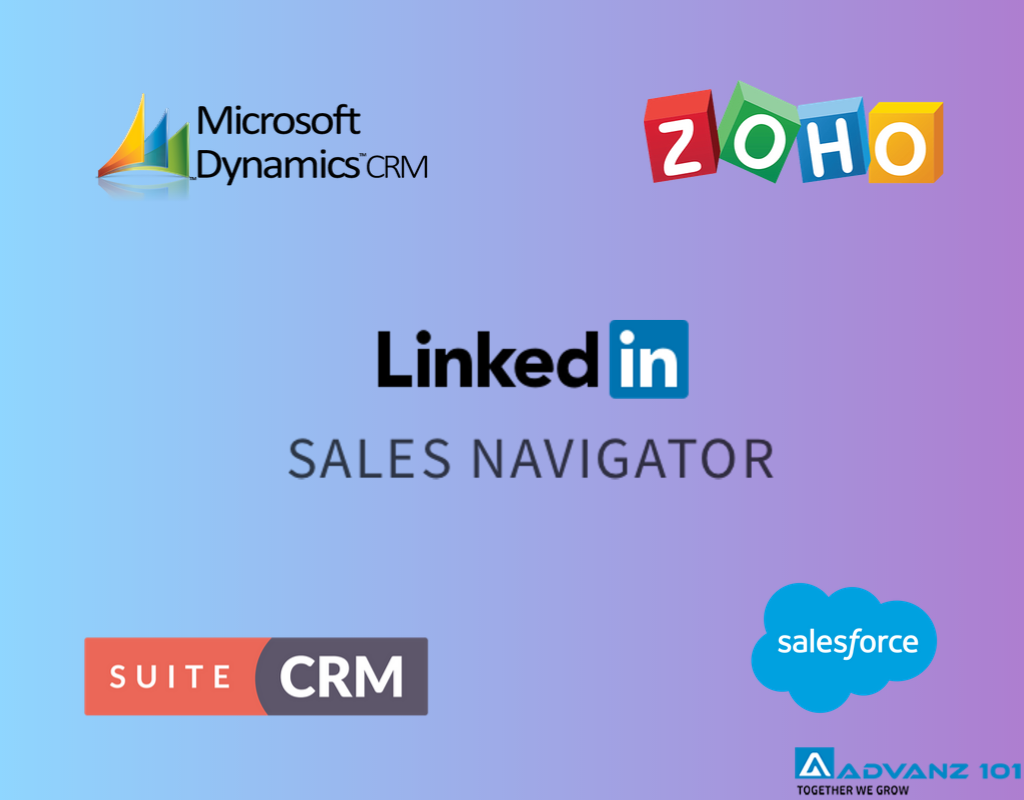As CRM integration with LinkedIn takes center stage, this opening passage beckons readers into a world crafted with good knowledge, ensuring a reading experience that is both absorbing and distinctly original. By harnessing the power of LinkedIn’s vast network, businesses can unlock a wealth of opportunities to enhance sales productivity, marketing effectiveness, and customer service.
This comprehensive guide will delve into the intricacies of CRM integration with LinkedIn, providing a roadmap for businesses to navigate the challenges and reap the substantial benefits. From exploring successful case studies to identifying emerging trends, this exploration aims to empower businesses with the knowledge and strategies needed to stay ahead in the ever-evolving digital landscape.
Overview of CRM Integration with LinkedIn
Integrating a customer relationship management (CRM) system with LinkedIn offers a range of benefits, including:
- Enhanced lead generation
- Improved lead quality
- Increased sales productivity
- Better customer service
- More effective marketing campaigns
Several successful CRM integrations with LinkedIn have been implemented, such as:
- Salesforce
- Microsoft Dynamics CRM
- Oracle Siebel CRM
- SAP Hybris Cloud for Customer Engagement
However, there are also some challenges to integrating a CRM with LinkedIn, including:
- Data security concerns
- Complexity of integration
- Cost of integration
- Maintenance and support
Methods for Integrating a CRM with LinkedIn

Integrating a CRM with LinkedIn enables seamless data exchange, improving sales and marketing efforts. There are several methods for integrating these systems, each with its advantages and considerations.
Native Integration
Native integration is offered by LinkedIn through its API (Application Programming Interface). This method involves directly connecting your CRM to LinkedIn’s platform, allowing for automated data exchange between the systems.
- Benefits:Seamless integration, real-time data updates, and access to LinkedIn’s features.
- Considerations:Requires technical expertise or third-party tools, may have limitations in data synchronization.
Third-Party Integrations
Third-party integration platforms provide a bridge between your CRM and LinkedIn. These platforms offer pre-built connectors and simplify the integration process.
- Benefits:Easy setup, no coding required, often support multiple CRMs and LinkedIn features.
- Considerations:May have subscription fees, limited customization options, and potential data security concerns.
Custom Integrations
Custom integrations involve developing a tailored solution to connect your CRM to LinkedIn. This method requires technical expertise and can be more complex.
- Benefits:Highly customizable, allows for specific data mapping and functionality.
- Considerations:Requires significant development time and resources, ongoing maintenance, and potential compatibility issues.
Step-by-Step Guide to Integrate a CRM with LinkedIn
The steps for integrating a CRM with LinkedIn vary depending on the method chosen. Here’s a general guide:
-
- Identify the integration method:Choose the method that best aligns with your technical capabilities and requirements.
- Prepare your CRM and LinkedIn:Ensure both systems are ready for integration, including necessary permissions and data preparation.
- Establish the connection:Follow the instructions for the chosen integration method to establish the connection between the systems.
- Configure data mapping:Map the fields between your CRM and LinkedIn to ensure data flows correctly.
- Test and optimize:Verify the integration is working as expected and make adjustments as needed to optimize data exchange.
Best Practices for Integrating a CRM with LinkedIn
-
-
- Define clear integration goals:Determine the specific objectives you want to achieve with the integration.
- Choose the right integration method:Consider your technical capabilities, data requirements, and budget.
- Ensure data security:Implement appropriate security measures to protect sensitive data.
- Monitor and maintain the integration:Regularly review the integration’s performance and make necessary adjustments to ensure ongoing functionality.
-
Benefits of CRM Integration with LinkedIn
Integrating a CRM with LinkedIn offers numerous advantages that can significantly enhance sales productivity, marketing effectiveness, and customer service.
Improved Sales Productivity, Crm integration with linkedin
-
-
- Enhanced Lead Generation:LinkedIn’s vast network and advanced search capabilities allow businesses to identify and connect with potential customers, expanding their lead pool.
- Streamlined Sales Process:By integrating LinkedIn data into the CRM, sales teams can access relevant information about prospects, track their interactions, and manage the sales pipeline more efficiently.
- Personalized Communication:LinkedIn provides insights into prospects’ professional interests, skills, and connections, enabling sales reps to tailor their outreach and build stronger relationships.
-
Enhanced Marketing Effectiveness
-
-
- Targeted Marketing Campaigns:CRM integration with LinkedIn enables businesses to segment their audience based on LinkedIn data, such as industry, job title, and company size, allowing for more targeted and effective marketing campaigns.
- Content Optimization:LinkedIn provides analytics on content performance, helping marketers understand what resonates with their audience and optimize their content strategy accordingly.
- Lead Nurturing:CRM integration with LinkedIn allows marketers to nurture leads by providing them with relevant content and engaging with them on LinkedIn, fostering relationships and increasing conversion rates.
-
Enhanced Customer Service
-
-
- Personalized Support:By accessing LinkedIn data, customer service representatives can tailor their support to each customer’s needs, addressing their concerns more effectively.
- Improved Communication:LinkedIn provides multiple communication channels, such as direct messaging and LinkedIn groups, allowing customer service teams to connect with customers and resolve issues promptly.
- Community Engagement:CRM integration with LinkedIn enables businesses to monitor customer feedback and engage with customers in LinkedIn groups and forums, building a strong community and fostering customer loyalty.
-
Case Studies of CRM Integration with LinkedIn
Several companies have successfully integrated their CRM with LinkedIn, achieving significant benefits. Let’s explore some notable case studies and analyze their results to identify the key advantages and lessons learned.
HubSpot and LinkedIn
-
-
- HubSpot, a leading CRM provider, integrated with LinkedIn to enhance its social media marketing capabilities.
- The integration allowed HubSpot users to track LinkedIn interactions, manage LinkedIn campaigns, and nurture leads through personalized messaging.
- As a result, HubSpot customers experienced increased lead generation, improved conversion rates, and strengthened customer relationships.
-
Salesforce and LinkedIn
-
-
- Salesforce, another renowned CRM vendor, partnered with LinkedIn to provide its customers with deeper insights into their LinkedIn networks.
- The integration enabled Salesforce users to access LinkedIn data within their CRM, including profile information, connections, and activity.
- This integration helped Salesforce users identify potential leads, expand their professional networks, and gain valuable insights into their prospects.
-
Microsoft Dynamics 365 and LinkedIn
-
-
- Microsoft Dynamics 365, a comprehensive CRM solution, integrated with LinkedIn to streamline sales and marketing processes.
- The integration allowed Dynamics 365 users to access LinkedIn data, such as company profiles, employee profiles, and industry insights.
- This integration enabled Dynamics 365 users to make more informed decisions, identify qualified leads, and nurture relationships with potential customers.
-
Future of CRM Integration with LinkedIn
The future of CRM integration with LinkedIn holds exciting prospects as the two platforms continue to enhance their capabilities and deepen their partnership.
One emerging trend is the increased use of artificial intelligence (AI) to automate and optimize CRM processes. AI-powered tools can analyze LinkedIn data to identify potential leads, track customer engagement, and provide personalized recommendations. This can help businesses streamline their sales and marketing efforts and improve their ROI.
Data Integration and Analytics
Another trend is the growing importance of data integration and analytics. By integrating LinkedIn data with their CRM systems, businesses can gain a more comprehensive view of their customers and make data-driven decisions. This can help them improve their targeting, personalize their marketing campaigns, and track the effectiveness of their sales efforts.
Enhanced Collaboration
In addition, the future of CRM integration with LinkedIn is likely to see enhanced collaboration between sales and marketing teams. By sharing data and insights through integrated platforms, these teams can work together more effectively to identify and nurture leads, close deals, and build lasting customer relationships.
Recommendations for Businesses
To prepare for the future of CRM integration with LinkedIn, businesses should consider the following recommendations:
-
-
- Invest in AI-powered tools to automate and optimize CRM processes.
- Prioritize data integration and analytics to gain a more comprehensive view of customers.
- Foster collaboration between sales and marketing teams to improve lead generation and customer engagement.
- Stay informed about the latest trends in CRM integration with LinkedIn and adopt new technologies as they become available.
-
Conclusive Thoughts

In conclusion, CRM integration with LinkedIn presents a transformative opportunity for businesses to elevate their sales, marketing, and customer service operations. By embracing the synergies between these powerful platforms, organizations can gain a competitive edge, foster meaningful customer relationships, and drive business growth to new heights.
FAQ Guide: Crm Integration With Linkedin
What are the key benefits of integrating a CRM with LinkedIn?
CRM integration with LinkedIn enables businesses to enhance sales productivity, improve marketing effectiveness, and elevate customer service.
What are some common challenges faced when integrating a CRM with LinkedIn?
Challenges may include data synchronization, maintaining data integrity, and ensuring seamless user experience across both platforms.
What are the best practices for integrating a CRM with LinkedIn?
Best practices include establishing clear goals, choosing the right integration method, ensuring data accuracy, and monitoring and evaluating the integration’s performance.

